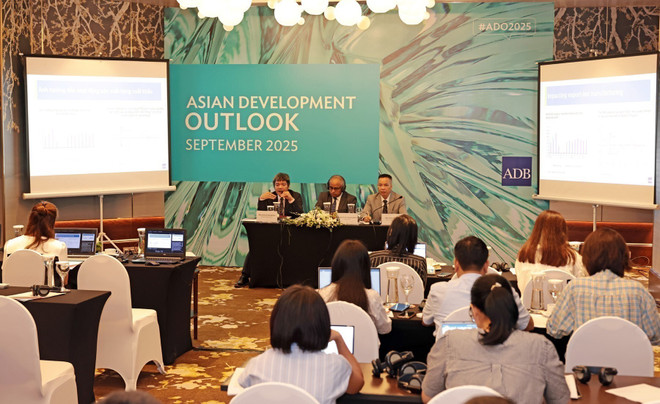Vietnam’s Economic Forecast: Resilience Amidst Global Challenges

In its latest Asian Development Outlook (ADO) report, the Asian Development Bank (ADB) has delivered an optimistic yet cautious perspective on Vietnam’s economy. The bank has raised Vietnam’s economic growth forecast for 2025 to 6.7% while adjusting the 2026 projection to 6.0%. This update comes in light of slightly lower inflation projections than previously estimated back in April.

During the report’s launch on September 30, ADB Country Director for Vietnam, Shantanu Chakraborty, emphasized that 2025 could present significant challenges for the Vietnamese economy. The looming tariff challenges from the United States, arising from Vietnam’s trade surplus, have raised concerns among economists and policymakers.
Notwithstanding these challenges, Vietnam has shown remarkable economic resilience this year. By June 2025, the country’s growth rate surged to an impressive 7.5%, marking the best first-half performance since 2010. This growth can largely be attributed to supportive government policies and a notable increase in export orders, particularly ahead of the impending US tariffs.
However, the ADB indicates that this momentum may begin to wane in the latter part of 2025, primarily due to the reciprocal tariffs that were implemented on August 7. These tariffs are expected to exert a downward pressure on economic performance as businesses adjust to the new trade environment.
Looking ahead, while the domestic economy appears stable, growth predictions indicate a slowdown compared to the robust expansion witnessed in the initial months of 2025. The ADB not only raised its GDP growth forecast but also reduced its inflation expectations, now forecasting inflation to be at 3.9% in 2025 and slightly easing to 3.8% in 2026.
Chakraborty stressed the importance of synchronizing fiscal and monetary policies to prevent overburdening monetary tools and maintain macro-financial stability. He highlighted that effective collaboration between these policy areas will be crucial in navigating the economic challenges ahead.
The ADB calls for comprehensive reforms to address structural challenges within the Vietnamese economy. These include enhancing climate resilience, fostering private sector competitiveness, improving state-owned enterprises’ performance, modernizing the tax system, and pushing for digital transformation. Such reforms are deemed essential to facilitate a balanced growth model in the long term.
Nguyen Ba Hung, Principal Country Economist at ADB Vietnam, noted various risks that could derail Vietnam’s economic trajectory. External factors, especially the reciprocal tariff measures imposed by the US, are of particular concern. Additionally, global uncertainties—including slowing growth in major economies—could diminish the import demand from partner countries, directly impacting Vietnam’s export growth.
On the domestic front, Hung cautioned that the government’s reform initiatives, especially in their early stages, might require adjustments that could limit their effectiveness. However, he remains optimistic, stating that if reforms are implemented efficiently, they could yield better-than-expected growth outcomes, possibly surpassing ADB’s projections.